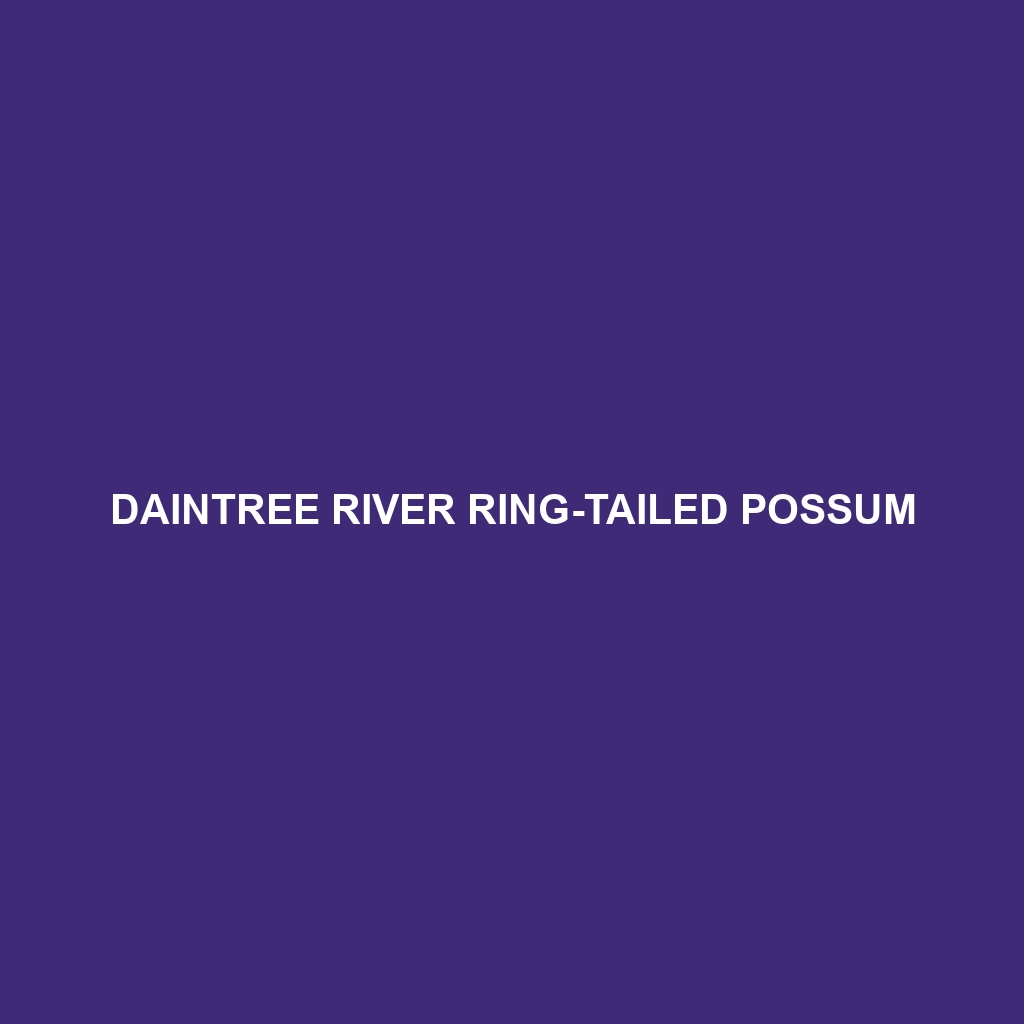Daintree River Ring-tailed Possum: A Detailed Description
The Daintree River Ring-tailed Possum (Pseudochirulus cinereus) is a unique and elusive marsupial native to the tropical rainforests of the Daintree region in North Queensland, Australia. Known for its striking appearance and arboreal lifestyle, this possum plays a vital role in the ecosystem and offers a fascinating glimpse into the biodiversity of one of the world’s oldest rainforests.
Physical Characteristics
Size: This species typically measures between 30 to 40 cm in body length, with a tail that can extend an additional 30 to 35 cm. They weigh between 700 grams to 1.2 kilograms.
Coloration: The Daintree River Ring-tailed Possum showcases a soft, dense fur coat predominantly grayish-brown on the back, transitioning to a lighter, creamy-white underbelly. Their tails are prehensile, featuring a distinct white tip that aids in grasping branches.
Special Features: One of the most notable features is their large, expressive eyes adapted for nocturnal vision. They also have sharp claws and opposable digits that enhance their climbing abilities.
Behaviors
Social Interactions: These possums are generally solitary but can be found in small family groups consisting of a mother and her young. They communicate through a series of vocalizations, including clicks and grunts, and scent markings.
Feeding Habits: Primarily folivorous, the Daintree River Ring-tailed Possum feeds on a variety of leaves, fruits, flowers, and occasionally insects. They have a specialized digestive system that allows them to process tough plant material efficiently.
Ecological Role: As herbivores, they play a crucial role in seed dispersal and the regulation of plant growth within their rainforest habitat.
Habitat
Range: Endemic to the Daintree Rainforest, this possum inhabits dense, tropical rainforest environments, particularly favoring mid to upper canopy layers.
Nesting: They construct nests, known as dreys, from leaves and twigs in the forks of trees. These nests provide shelter and protection from predators.
Adaptations
Arboreal Adaptations: Equipped with prehensile tails and dexterous limbs, they are well-adapted to an arboreal lifestyle, allowing them to navigate the forest canopy with ease.
Nocturnal Adaptations: Their large eyes enhance night vision, enabling them to forage and move around efficiently under the cover of darkness.
Conservation Status
Threats: The primary threats to the Daintree River Ring-tailed Possum include habitat destruction due to logging and agricultural expansion, climate change, and predation by introduced species such as cats and foxes.
Conservation Efforts: Efforts to conserve this species include habitat protection through the establishment of national parks and reserves, as well as research initiatives aimed at understanding their ecology and population dynamics.
Fun Facts
Unique Tail: The white-tipped tail is not only a distinguishing feature but also serves as a balancing tool and an extra limb for grasping branches.
Ancient Lineage: The Daintree Rainforest, where this possum resides, is estimated to be over 135 million years old, making it one of the oldest rainforests on Earth.
Slow Metabolism: Their folivorous diet contributes to a relatively slow metabolic rate, requiring them to be energy-efficient and spend a significant amount of time resting.
By understanding and appreciating the Daintree River Ring-tailed Possum, we gain insight into the intricate web of life that sustains one of the planet’s most diverse and ancient ecosystems.
